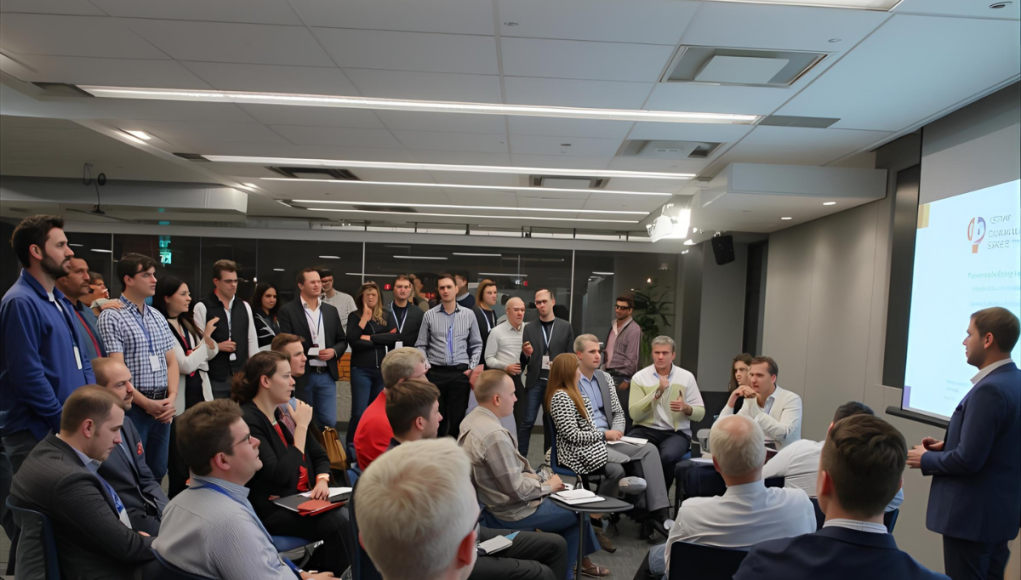Remember the wild days of “growth at all costs”? Those champagne-popping, hyper-scaling years when startups were burning millions just to chase user numbers and market share. Fueled by seemingly endless VC money, the mantra was simple — grow fast, dominate, and figure out profitability later.
The party’s over, or at least, the rules have changed. In today’s funding environment, startups that want to impress investors must prove sustainable growth, proof of traction, and unyielding capital efficiency.
This shift isn’t a nuance; it’s a fundamental recalibration of how VCs assess opportunities — one that’s reshaping founder behavior, valuation norms, and even investor psychology. As Disrupt2025 made clear, the modern startup playbook prizes disciplined execution and measurable unit economics over flashy hype.
This article explores what led to this transformation, what investors now expect, and how founders — especially in emerging ecosystems — can adapt to thrive.
The Heyday of “Growth at All Costs”
In the 2010s and early 2020s, startups operated under a single golden rule: scale first, think later.
Low interest rates made capital cheap and abundant. Venture firms, flush with liquidity, competed aggressively to find the next Uber, Airbnb, or Stripe. The narrative was seductive — a startup that captured users fastest would inevitably become the category leader, and profits would follow.
The driving forces behind this era were unmistakable:
- Low-cost capital: Global central banks kept interest rates near zero, encouraging speculative investments.
- Tech tailwinds: The mobile revolution, SaaS expansion, and on-demand economy made digital scalability look effortless.
- Winner-take-all mentality: Founders raced to dominate markets, often disregarding the cost of customer acquisition or operational efficiency.
- VC exuberance: Investors prized market share over margin, often rewarding startups with higher valuations despite unsustainable burn rates.
The results were both dazzling and dangerous. On one hand, this environment gave birth to breakthrough innovation — entire industries were disrupted, and household-name unicorns were born. On the other hand, it led to inflated valuations, fragile business models, and overextended founders chasing vanity metrics. Many startups, built on unsound unit economics, ultimately collapsed once funding dried up.
The Inevitable Correction: Why the Bar Changed
The correction wasn’t sudden — it was inevitable.
By the early 2020s, cracks began to appear. Inflation surged globally, central banks tightened liquidity, and interest rates rose sharply. The easy money era that had buoyed speculative startups ended abruptly.
The macro shift was brutal:
- Rising rates made capital expensive.
- Investors pulled back, prioritizing returns and risk management.
- Tech stocks, once darlings of the market, faced valuation resets.
- LPs (limited partners) demanded measurable performance rather than lofty narratives.
This triggered a domino effect in the private markets. VC firms, now under pressure themselves, became more selective. The days of funding ideas without revenue or proof of traction were over.
Investor fatigue also set in. Many realized that the “growth at all costs” mantra had produced unsustainable businesses and heavy dilution. Founders who once bragged about 200% growth were suddenly grilled about cash flow, burn rate, and runway.
Thus emerged a new paradigm — the age of capital efficiency.
In this new reality:
- Sustainable Growth means scaling that doesn’t depend on endless external infusions. Founders must show a path to maintaining momentum through revenue, not just fundraising.
- Proof of Traction means credible evidence that the market wants what you’re building — real customers, retention, and revenue.
- Capital Efficiency means achieving more with less — demonstrating that every dollar invested creates measurable value.
Disrupt2025 panels echoed this shift repeatedly: “Startups that can’t justify their unit economics won’t even make it to second-round meetings.”
What VCs Are Now Asking: A Checklist for Startups
At Disrupt2025, the contrast was stark. Founders no longer dazzled investors with futuristic promises or viral metrics — instead, they fielded tough, surgical questions: What’s your gross margin? What’s your payback period? How long before you hit profitability?
Here’s what investors now demand in every pitch deck:
- Clear Path to Profitability
Founders must present a defined strategy for becoming cash-flow positive. Not someday — but soon. VCs want to see detailed projections and credible milestones that demonstrate fiscal discipline. - Strong Unit Economics
The conversation has shifted from total users to economics per user. Startups must know — and improve — their Customer Lifetime Value (CLTV) vs Customer Acquisition Cost (CAC). Profitability per transaction or per customer is the new growth story. - Proof of Traction
Vanity metrics are dead. What matters now are retention rates, repeat usage, cohort data, and organic advocacy. Investors look for behavioral signals that indicate real product-market fit, not hype. - Defined Addressable Market (TAM/SAM/SOM)
Over-inflated TAM slides don’t impress anymore. VCs expect founders to demonstrate a realistic and data-driven understanding of their market — especially how they’ll win in a focused niche first. - Healthy Runway & Burn Rate Management
Startups must manage cash prudently. An 18–24-month runway is considered healthy. Founders should show flexibility to extend runway without crippling growth. - Capital Efficiency Metrics
A popular benchmark discussed at Disrupt2025: Revenue per dollar of VC raised. Founders that show lean operations and frugal innovation — building efficiently without compromising quality — stand out. - Defensible Business Model
Investors now probe the durability of your business. Do you have moats — IP, data, brand loyalty, or network effects — that protect long-term margins? - Realistic Valuation & Dilution Awareness
Gone are the 50x revenue multiples. Founders must embrace rational valuations and understand dilution trade-offs. Overvaluation early can kill future rounds. - Execution-Focused Team
The best ideas are worthless without execution. VCs now back disciplined, grounded teams who can navigate uncertainty, not just visionaries with pitch-deck charisma.
This new due-diligence culture rewards clarity and discipline. Startups that thrive will be those who treat every round not as celebration, but as a proof checkpoint in the path to profitability.
Rethinking Metrics, KPIs, and Runway in Emerging Ecosystems
For startups in emerging ecosystems like India, Southeast Asia, or Africa, this shift feels even sharper. Many of these regions had just started attracting global capital when the bar moved higher.
Challenges:
- Less mature VC infrastructure and fewer repeat founders.
- Heavy dependence on cross-border capital, which now demands higher proof.
- Unique consumer behaviors and pricing dynamics that limit ARPU growth.
To succeed, founders must recalibrate:
- Prioritize Profitability Early: Investors no longer reward “potential”; they reward near-term sustainability.
- Pursue Ruthless Capital Efficiency: Every rupee or dollar must yield measurable growth. Scrutinize spending like a CFO.
- Manage Runway Realistically: Always plan for at least 18–24 months of operational runway, assuming delayed funding cycles.
- Adopt Actionable KPIs: Replace vanity metrics (downloads, impressions) with KPIs that tie directly to cash — revenue growth, retention, and CLTV/CAC ratios.
- Master Storytelling: In cautious markets, founders must articulate not just what they’re building, but why it will endure.
- Evolve Founder Mindset: The modern founder is part-visionary, part-operator. Disciplined execution now beats bold expansion.
Emerging ecosystems that embrace this mindset shift could actually benefit: with fewer overfunded competitors, lean startups can dominate through smarter, more efficient growth.
Conclusion: The Future of VC and Startups
The VC landscape has matured — moving from hype to health. Capital efficiency, sustainable growth, and proof of traction now define the new startup success formula.
As evidenced by Disrupt2025, this transformation isn’t regression; it’s evolution. Founders who adapt — mastering their metrics, honing their business models, and embracing disciplined scaling — will build stronger, more enduring companies.
The age of easy money may be gone, but what replaces it is healthier, smarter, and infinitely more sustainable. For startups willing to evolve, this isn’t the end of the party — it’s the start of a more meaningful one.




























